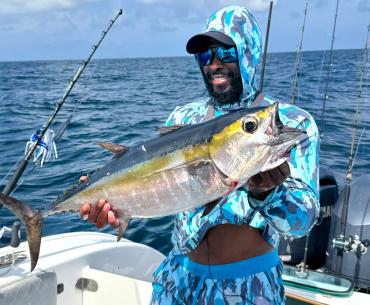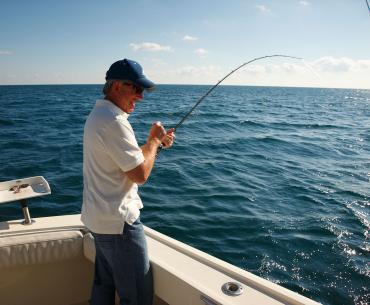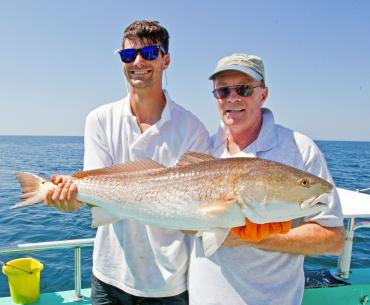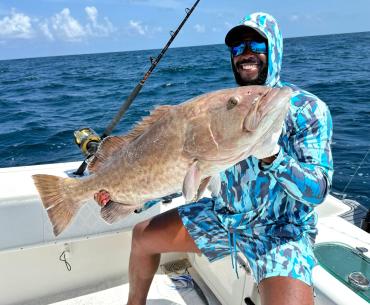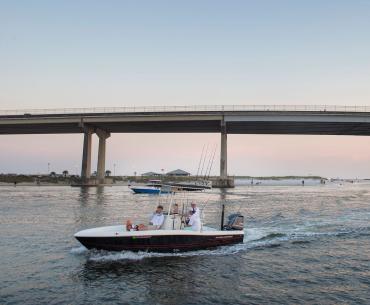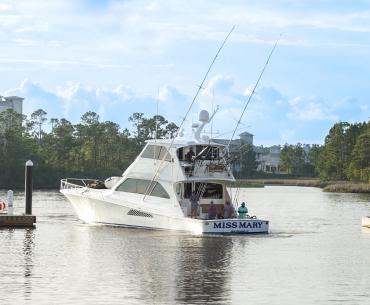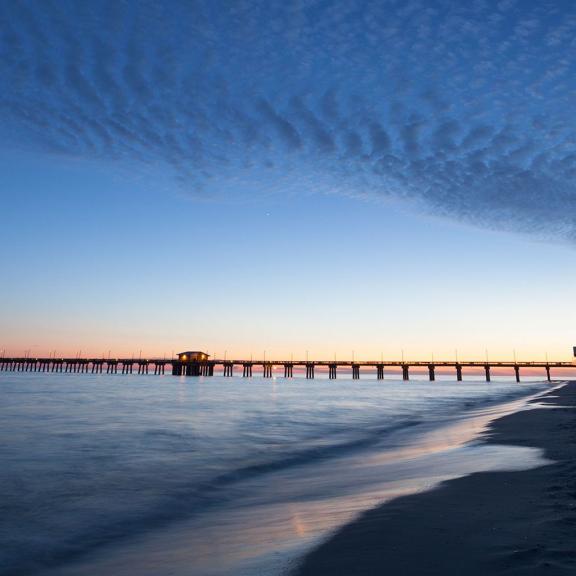
For those who come for a visit during the hot weather, several options are available. If you don’t bring your own boat, some local guides offer night fishing charters. These trips, often in search of speckled trout and redfish, are a great way to explore inshore night fishing. Fishing charters in Alabama also sometimes target red snapper fishing in Orange Beach, along with an occasional flounder under the lights.
Night Fishing
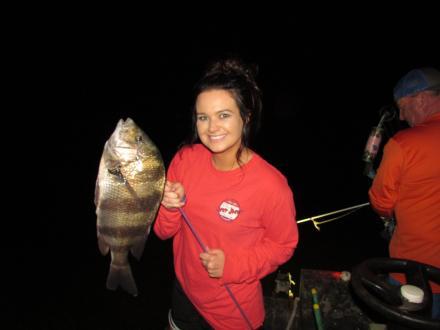
Preparing for a Night Fishing Expedition
Preparing for a Night Fishing Expedition
If you do bring your own boat, make sure the running lights meet U.S. Coast Guard standards and ease the boat down the ramp just as the sun sets or in the wee hours of the morning. Sometimes, the later you stay, the better the fishing. Check the tide flow to determine the best time to fish. Specks and reds bite better when the water is moving.
Stealth is key when night fishing inshore. The fish, especially speckled trout and redfish, won’t tolerate much noise. These fish gather under lights near piers and boathouses, attracted by the small baitfish and crustaceans, like shrimp and crabs, congregating there. The quiet waters under the lights are ideal for a productive catch.
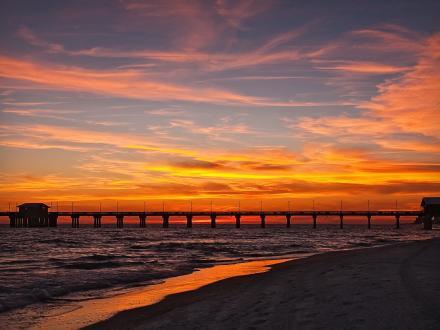
How To Catch Fish at Night
How To Catch Fish at Night
How to catch fish at night starts with using the right bait and approach. Lights on the piers and boathouses attract insects, which in turn attract shrimp and small fish. Speckled trout, redfish, and flounder lurk just on the edges, waiting to ambush their prey. Matching your bait to what’s naturally found under the lights is key to a successful trip. Live shrimp and minnow-imitation plastic lures hooked on a jighead are often best, but fly fishermen are having luck with the usual streamer flies. Downsize the lure to match the bait, which is often very small.
When learning how to catch speckled trout at night, it’s important not to cast directly under the light, which can spook the fish. Cast to the edges of the light where the bigger fish lurk in the shadows, waiting to ambush a shrimp or juvenile crab that is swept along by the tide. Close your casts into a tighter circle around the light. If you're fishing for redfish, the same principles apply when figuring out how to catch redfish at night.
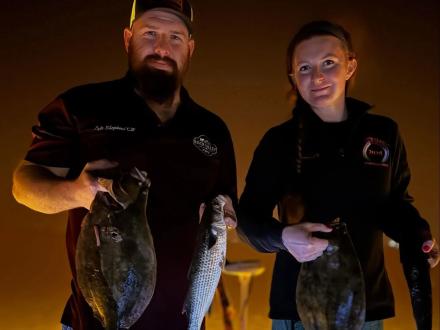
Nighttime Fishing Supplies You Should Bring
Nighttime Fishing Supplies You Should Bring
Having the right night fishing gear is essential for a successful outing. Use lighter lines to avoid spooking the fish, but ensure they're strong enough to handle barnacle-encrusted pilings. A good setup is 10- to 12-pound test monofilament or fluorocarbon with a 15- to 20-pound leader, depending on water clarity. Be sure to pack essential saltwater fishing gear, like a No. 1 Kahle hook and jighead, for natural bait presentations.
Remember to bring a sensitive, lightweight rod and reel to detect subtle bites in low-light conditions. A headlamp or flashlight can also be helpful for navigating and seeing your gear. Don't forget safety essentials like a life jacket, first aid kit, and signaling device.
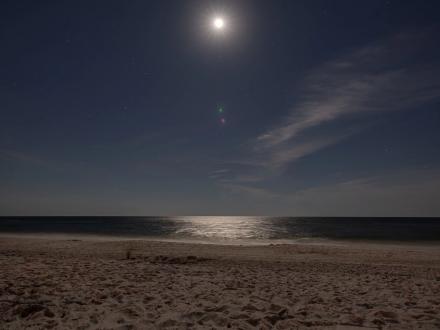
Onshore Night Fishing
Onshore Night Fishing
When speckled trout fishing or pompano fishing at night, a lighter line can be beneficial. However, ensure it's strong enough to handle the fish and any obstacles. A good setup is 10- to 12-pound test monofilament or fluorocarbon with a 15- to 20-pound leader.A lighter line will keep you from spooking fish, but don’t go too small because you might have to apply pressure to keep a fish away from the barnacle-encrusted pilings. I like 12-pound test monofilament or 10-pound fluorocarbon on either spinning or baitcasting tackle. I use a 20-pound fluorocarbon leader for stained water or a 15-pound fluorocarbon when the water is clear.
I try to rig live shrimp as simple as possible with just a No. 1 Kahle or No. 2 live bait hook. A natural presentation is often the key. Toss the shrimp up the current and let it drift through the light. For night fishing with live shrimp, a simple rig with a No. 1 Kahle or No. 2 live bait hook is often sufficient. A natural presentation is key. Toss the shrimp up the current and let it drift through the light. Remember, when a live shrimp senses trouble, it may start taking evasive action. A fish might grab the shrimp and move to the shadows before swallowing it. Avoid setting the hook too quickly to prevent dislodging the bait.
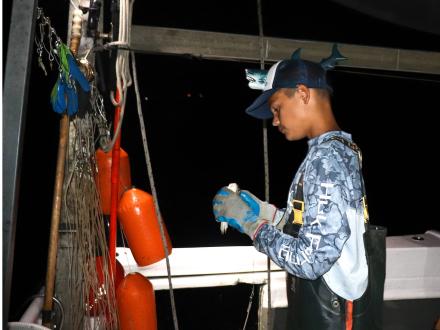
Night Fishing Etiquette & Safety
Night Fishing Etiquette & Safety
Always practice courtesy when fishing at night. If the owners or renters are out on the pier, move on to the next vacant pier with a light. And if you do happen to toss a lure onto the pier and get snagged, just donate the lure to the pier owner and break it off. Don’t get on someone’s pier to retrieve a lure without permission.
